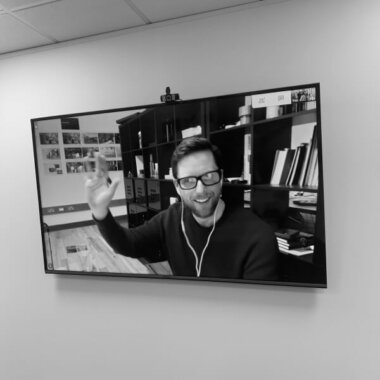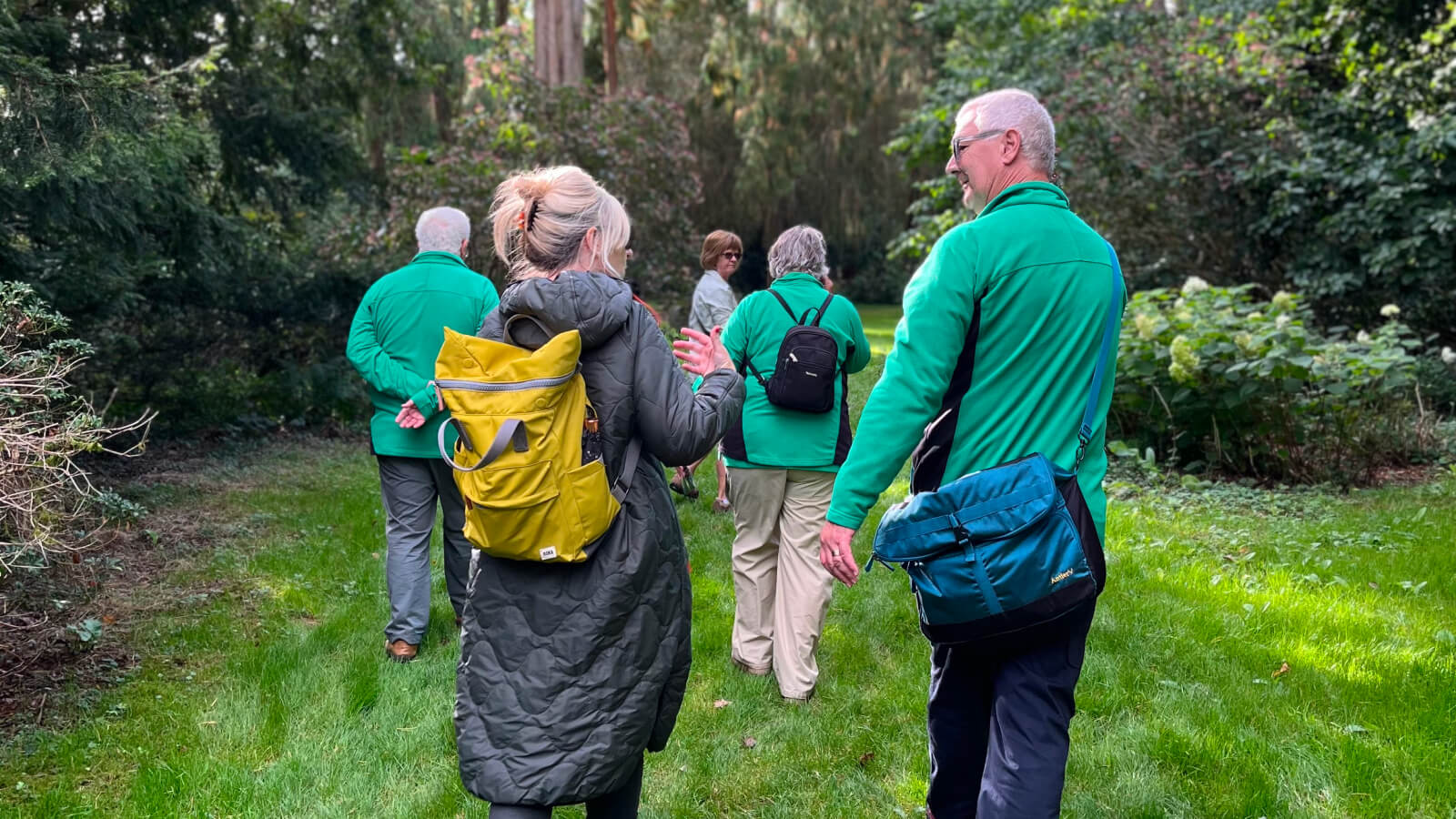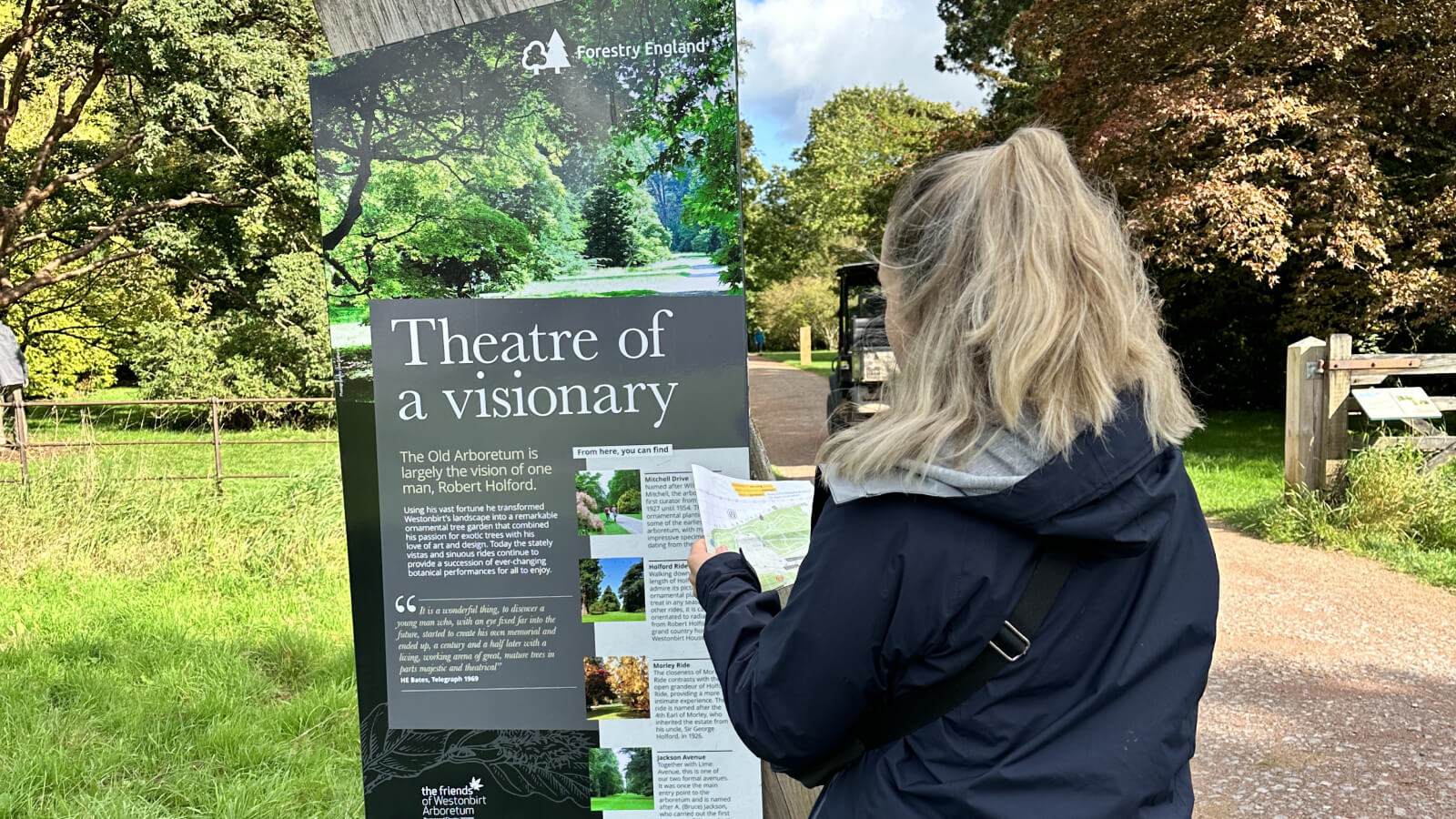
Putting design in its place:
the value of site visits
Opinion
6 min read
Over the past few years, we’ve worked on a range of projects in which ‘place’ has been critical. We’ve helped attractions boost their visitor numbers, worked with product makers whose locality is an advantage, and helped old favourites tap into something new. And whether we’re shaping a brand identity, refining signage and wayfinding, or creating a marketing campaign, there’s one thing we’ve appreciated a lot recently: the importance of a site visit.
It’s hard to beat being there
For us, site visits aren’t a nice-to-have or an option; they’ve become essential. They help us connect with the space and discover those intangible quirks that you don’t get from films, photos, or briefing decks. Even the people we’re working with behave differently on their own ground, highlighting things in the moment that would otherwise be missed. Most importantly, a site visit is a chance to observe and interact with the employees, visitors, or customers who move through the spaces every day.

Putting names to faces… or faces to names
Every attraction is run by passionate, deeply committed people—curators, marketers, operations teams, volunteers… They know the place inside out. And while a Zoom call can get you part of the way, sitting down with them in the space brings a different kind of clarity. It’s a chance to hear the stories that don’t make it into a brief. You understand how they describe their space, how they talk about challenges, and what really matters to them day to day. That human connection often unlocks creative directions that feel more rooted, more relevant, and capture the everyday language and phrases the team uses with customers.
“Understanding the customer experience requires more than reports and metrics—it demands presence. Site visits provide invaluable context: the nuances of customer behavior, the realities faced by frontline teams, and the small friction points that go unnoticed in data. By immersing yourself in the real environment, you gain authentic insight into how a product or service truly fits into people’s lives. It’s only through that direct observation that opportunities for meaningful improvement reveal themselves.”
Ben Hostler, Creative Director
Understanding spaces firsthand
Photos, PDFs or a site map can only go so far. Physical space has texture and layers. It defines and shapes how people move, what they notice, where their attention goes (or doesn’t!), and how they feel. Moving with them becomes a way to understand the emotions linked to the brand and the associations that can be highlighted through our brand and design work.
Then there’s the physical element. Spending time on site means we can identify pinch points, awkward transitions, or unloved corners that deserve more attention. These nuances directly inform our thinking, especially on wayfinding and signage projects where flow matters.

“Spending time on-site at Durstons was essential. Only by being there can you truly appreciate the craft and care the team pours into their performance products. In this case, it meant rolling up our sleeves and burying our hands in the raw ingredients, but that’s what makes Durstons so powerful, and what helps us to confidently share that story with their audience.”
Richard Windsor, Design Director
Observing and engaging with people
Designing for people means understanding people. And that happens best in the wild.
We take time to observe how customers actually use a space: how they navigate, what captures their attention, where they linger or where they get confused. These quiet moments of watching are often more valuable than any survey data.
And when we can, we talk. A five-minute conversation with a parent juggling two kids or a retired couple exploring a heritage site can reveal insights that can’t be found any other way. These real interactions help test our assumptions and often reshape them.
“I’ll always remember working on the English Heritage project many years ago. During an interview at the site’s exit, a customer said they’d had a lovely day at this National Trust property. It told us straight away that there was no distinctiveness or clear branding at the site.”
Jon Kerswell, Strategy Director
Transforming working spaces
Whilst we’ve worked with a number of visitor attractions over the years, the importance of place isn’t limited to just those clients. We’ve seen the same principles apply to offices and other working environments. A well-branded workspace does much more than just look good. It helps to align teams around a shared sense of purpose. So, getting to know where people work and how they use the space is critical. After all, where people work should reflect the company’s values and vision. Place can become a daily reminder of what matters most. It can help to inspire teams, reinforce culture, and — when clients or partners visit —share what makes the brand distinctive.
Using your senses
Other workspaces are just as important to get to know. Whether it’s factories or other kinds of production, bringing your senses to bear on a project can have interesting results. We’ve been lucky enough to work on gin and rum brands, where the production processes can form a key part of the heart and soul of the product and brand.
We’ve also worked with growing media (‘compost’ to you and me). Seeing the scale of an operation like this and the way it’s made brings real insight into the quality and care that goes into these products. Feeling the product, smelling it (nicer than you’d ever imagine!), and seeing it change are important messages to communicate with customers.

Capturing the intangible
There’s also something harder to pin down but just as important: the feel of the place.
What’s the energy like? Is it fun? Serious? Quiet? Energetic? These emotional cues influence tone of voice, visual rhythm, and colour palettes. They help us know whether it’s a space for long-form interpretation boards — a point in the journey to learn something and absorb information — or whether it’s a space to highlight simply and clearly what’s next. Approaching spaces in this way helps us amplify what the space already offers, rather than overriding it with generic or misplaced creative solutions.
“Visiting WWT’s London Wetland Centre brought to life the complexity that goes into creating a rich yet seamless visitor experience. In my first ten minutes, I learnt about the important role wetlands play in fighting climate change, found the Asian short-clawed otters in time for feeding, and needed to find the facilities for baby changing. Getting to the site means we get the hands-on experience that can’t be replicated through documents or virtual means. (And I’ve never seen an otter have its dinner before!)”
Alice Bridges, Client Director
Context is key
Ultimately, the brand work we do is all about communication. To communicate well, we believe context is key — and that context lives in the physical realities and human eccentricities unique to each site. So, get out there!
